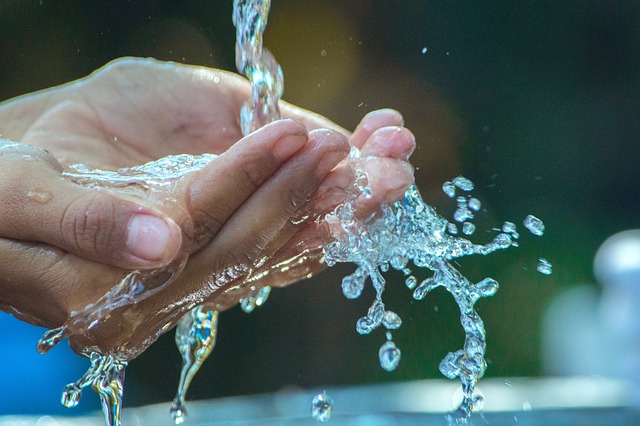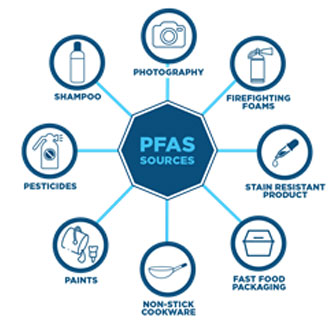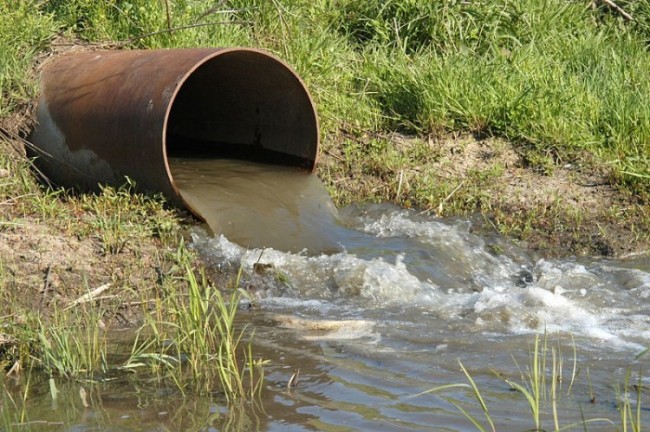 Recently, the Environmental Protection Agency (EPA) announced new drinking water laws to limit exposure to a group of dangerous chemicals called PFAS.
Recently, the Environmental Protection Agency (EPA) announced new drinking water laws to limit exposure to a group of dangerous chemicals called PFAS.
You might wonder why the EPA passed this regulation and what it means for the United States. But before we get into that, let’s take a closer look at what PFAS are and how they can contaminate our drinking water.
What are PFAS?
PFAS (Per- and Polyfluoroalkyl Substances) is a group of artificial chemicals used since World War II. These compounds are used to make products grease, stain, heat, and water resistant. Think of non-stick pans, water-resistant jackets, fire-fighting foams, stain-resistant carpets, cosmetics, and more.
 In total, there are over 10,000 known PFAS. Common PFAS include perfluorooctanoic acid (PFOA) and perfluorooctane sulfonic acid (PFOS). Both have been phased out in the U.S., but continue to be manufactured in other countries. PFAS don’t disintegrate easily because of their strong molecular bonds and have been detected in air, soil, and plants.
In total, there are over 10,000 known PFAS. Common PFAS include perfluorooctanoic acid (PFOA) and perfluorooctane sulfonic acid (PFOS). Both have been phased out in the U.S., but continue to be manufactured in other countries. PFAS don’t disintegrate easily because of their strong molecular bonds and have been detected in air, soil, and plants.
Impacts of PFAS
Previously, we learned how PFAS affects Eurasian otters in British waters (article here).
However, PFAS can also harm humans. There is growing evidence that decade-old PFAS are still in our environment and continue to appear in large numbers in our food and water. Additionally, humans exposed to PFAS for extended periods often end up being diagnosed with cancer, high cholesterol levels, and immune damage in infants.
But how do they get into our drinking water?
PFAS enters drinking water from industrial effluents or discharges from sewage treatment plants. When products containing PFAS are spilled on the ground or over lakes and rivers, PFAS are transported long distances into drinking wells, contaminating clean drinking water.
 The dangers that these challenges pose to public health have compelled the EPA to issue a new set of regulations for six PFAS in the water. From now on, water maintenance systems must install systems to monitor the level of PFAS in the water and remove them if they are found to be above permissible levels. This marks the first federal regulation restricting PFAS - laws and regulations have taken place on the regional level.
The dangers that these challenges pose to public health have compelled the EPA to issue a new set of regulations for six PFAS in the water. From now on, water maintenance systems must install systems to monitor the level of PFAS in the water and remove them if they are found to be above permissible levels. This marks the first federal regulation restricting PFAS - laws and regulations have taken place on the regional level.
What The New Regulations Mean
The regulation requires that public water systems address dangerous exposure to PFAS within the next five years. The first three years would be spent sampling water and determining the level of PFAS, and the final two years would be spent installing technologies to filter PFAS.
Activists have hailed these limits as topical and necessary, citing decades of dangerously high levels of chemicals in the water. The new regulations increase public trust in the EPA. Previously, low water standards failed to restrict PFAS in drinking water, sparking an outcry from environmentalists.
But beyond just PFAS, the EPA is looking to regulate other sources of water contamination. These include unregulated pesticides and other pharmaceuticals. However, the path to this goal will not be a cakewalk - it will cost over $1 billion for water companies to comply with these limits.
Despite the challenges, the EPA’s new regulation is a set towards a safer, cleaner environment for American citizens.
Sources: NPR, NBC, BBC, CDC, CA.gov, NJ.gov







